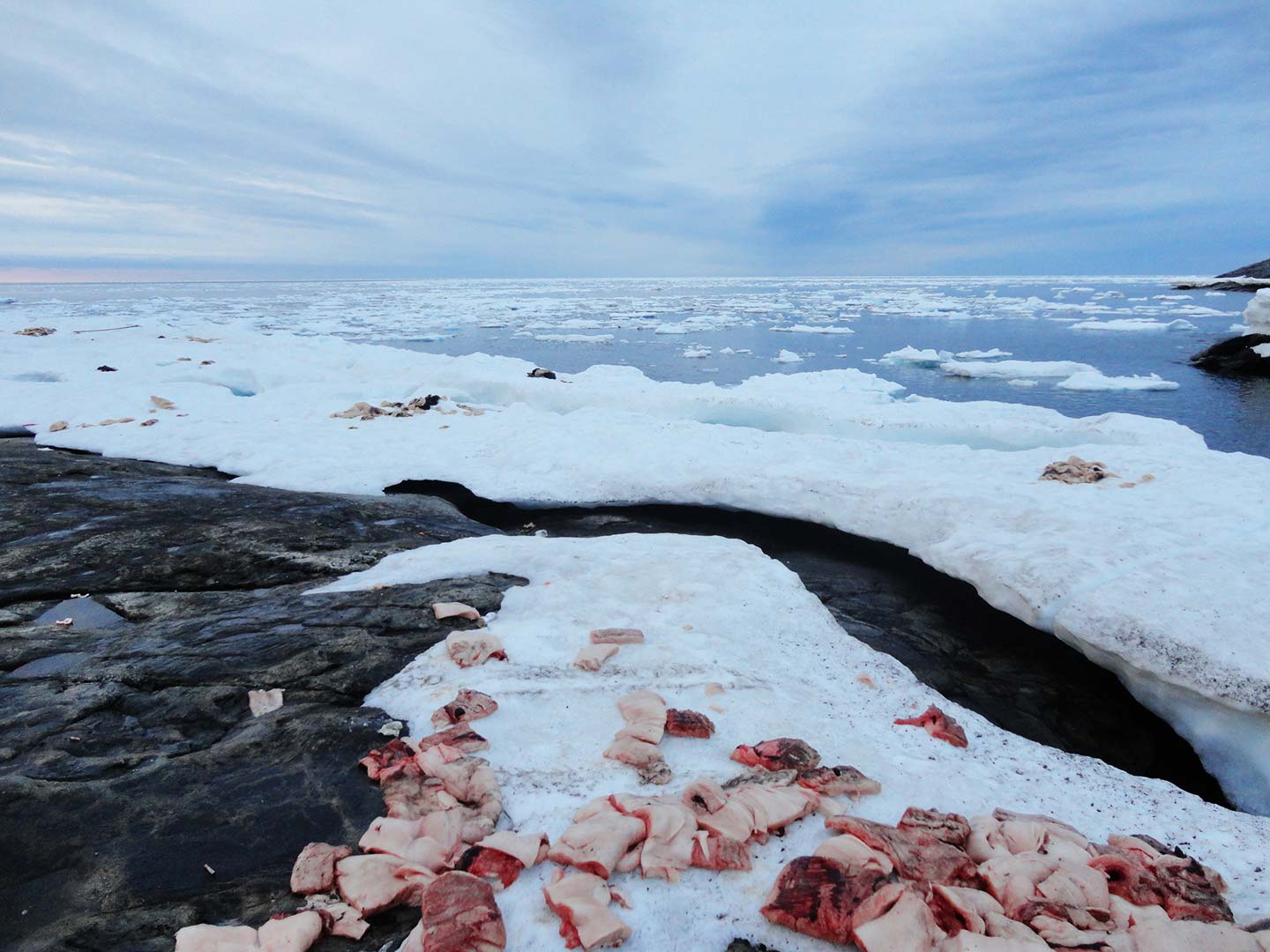LITTORAL CHAIR RESEARCH PROJECT
Selenoneine and Inuit health

Context
Originally discovered in tuna meat, selenoneine is an organic, selenium-containing compound. It is considered to be a powerful antioxidant, and several studies suggest that it could also help reduce the harmful health effects of mercury. While mercury exposure remains a topical issue in the North, our research group has discovered high levels of selenoneine in Inuit blood, especially among women, and in maqtaaq (beluga skin and blubber). Inuit hunters have speculated that selenoneine levels were higher in the whale’s tail, which is traditionally consumed by women. Our studies also show that selenoneine does not accumulate through the marine food web. In fact, only certain species of bacteria and fungi seem to be able to produce it. More studies are needed to better understand how selenoneine affects human health, the mechanisms involved, as well as its origin in the Arctic marine ecosystem.
Objectives
- Study the distribution of selenoneine in different tissues of beluga whales
- Examine the role of the microbiota in the synthesis and acquisition of selenoneine by marine species in contact with marine sediments in Nunavik (i.e. beluga whales, walrus and blue mussels)
- Assess the effects of selenoneine on mercury toxicity in Inuit adults in Nunavik (as part of Qanuilirpitaa? 2017)
- Explore the mechanisms by which selenoneine may reduce the toxicity of mercury in red blood cells and by using animal models (pending funding).
Team members involved
Funded by
- Northern Contaminant Program
- Crown-Indigenous Relations and Northern Affairs Canada
- Institut nordique du Québec
- North Sentinel
Principal investigators
- Mélanie Lemire
- Pierre Ayotte (Institut national de santé publique du Québec/Laval University)
- Jean-Éric Tremblay (Laval University)
Co-investigators
- Matthew Little
- Nicolas Derome
- Philippe Archambault
- Paul de Koninck
- Marc Amyot
Partenaires
- Institut national de santé publique du Québec
- Nunavik Regional Board of Health and Social Services
- Nunavik Nutrition and Health Committee
- Nunavik healthcare providers
- National Research Council Canada
- Regional Nunavimmi Umajulivijiit Katujaqatigininga (RNUK)
- Nunavik Marine Region Wildlife Board
- Kativik Ilisarniliriniq
- Inuit Tapiriit Kanatami
- Inuit Circumpolar Council
Little M, Achouba A, Dumas P, Ouellet N, Ayotte P*, Lemire M*. (2019). Determinants of selenoneine concentration in red blood cells of Inuit from Nunavik (Northern Québec, Canada). Environment International. 127: 243-252. DOI:10.1016/j.envint.2018.11.077
Achouba A, Dumas P, Ouellet N, Little M, Ayotte P*, Lemire M*. (2019). Selenoneine is a major selenium species in beluga skin and red blood cells of Inuit in Nunavik. Chemosphere. 229: 549-558. DOI: 10.1016/j.chemosphere.2019.04.191
Achouba A, Dumas P, Ouellet N, Ayotte P*, Lemire M* (2016). Plasma levels of selenium-containing proteins in Inuit adults from Nunavik. Environment International 96; 8-15. DOI: 10.1016/j.envint.2016.08.015
